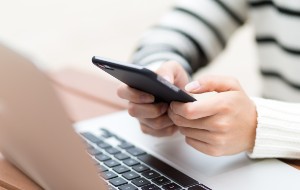Table of contents
- What is Cydia
- How do you know if Cydia is on your iPhone
- How to detect Cydia on iPhone
- 1. Look for the Cydia app icon on the iPhone home screen
- 2. Use the Spotlight search bar to unhide Cydia
- 3. Detect Cydia on iPhone with Clario Anti Spy
- How to remove Cydia from iPhone
- Back up your iPhone
- Erase and reinstall iOS
- Restore your iPhone data
- Conclusion
- FAQ about Cydia on iPhone
- 1. Is Cydia safe for iPhones?
- 2. Do I have Cydia on my iPhone?
- 3. What is the Cydia icon on an iPhone?
What is Cydia
Cydia is an alternative app store and package manager for jailbroken iPhones, often used to install apps outside Apple's App Store. Jailbreaking relies on methods such as Checkra1n, unc0ver, and Taurine to bypass Apple's restrictions on iOS. The benefits of a jailbreak include customizing the system software and installing apps not available on the App Store. Package managers like Cydia manage these tweaks, updates, and installed system modifications.
As one of the first unofficial app stores for the iPhone, Cydia is prevalent mainly on jailbroken devices running iOS 14 and older. While you can still find Cydia on newer iOS versions, modern package managers such as Sileo, Zebra, and Installer 5 are now more widely used.
How do you know if Cydia is on your iPhone
Jailbreaking bypasses the iPhone's safety protocols, making the device vulnerable to security and privacy threats. When a jailbreak is performed without your consent, someone may use it to secretly install spyware or Cydia, making it important to detect Cydia on iPhone if you suspect tracking. Spyware and other fake applications are available for these purposes through non-Apple storefronts.
Cydia or a different package manager might be on your iPhone if you believe your phone is being tracked. For instance, someone with regular access to your iPhone, like a disgruntled spouse, could jailbreak the device and use Cydia to install tracking software.
Common signs your iPhone may be hacked, jailbroken, or have hidden Cydia installed include:
- Unfamiliar apps
- Weird status icons
- Faster battery drain
- Sluggish app performance
- Frequent app and system crashes
- Increased data usage
- Phone lighting up when not in use
- Unusual permission requests
- Background noises during calls
Some apps, notably banking-related, may refuse to work on jailbroken devices and display a security warning asking you to restore the system software.
How to detect Cydia on iPhone
Cydia usually appears on your iPhone’s Home Screen after a jailbreak is installed, making it one of the easiest ways to detect Cydia on iPhone. It's also available for download after a jailbreak.
However, if someone jailbroke your device without permission, they may try to find hidden Cydia on iPhone and remove its icon from view to avoid detection. They might hide the icon inside a folder, move it to the App Library, rename it using a tweak, or replace it with another app icon.
Fortunately, there are several ways to unhide Cydia on iPhone and confirm whether your device is jailbroken. These include thoroughly checking for the app on the Home Screen, in the App Library, and using Spotlight search. Third-party jailbreak detection software like Clario Anti Spy can also detect Cydia.
Note
Having Cydia on an iPhone doesn’t necessarily mean it's jailbroken. For example, many fraudulent websites claim to jailbreak devices, often for a fee. These sites don't perform a true jailbreak—instead, they add a simple browser-based shortcut to Cydia.
1. Look for the Cydia app icon on the iPhone home screen
To start, check your iPhone’s Home Screen, folders, and App Library to find hidden Cydia on iPhone if it’s installed but not visible.
Here’s how to find hidden Cydia on iPhone manually:
- Swipe through the iPhone's Home Screen pages to see if you can spot Cydia. Its icon looks like an open box with multiple smaller boxes against a brown background.
- Open all folders on your Home Screens. Some folders contain multiple pages, so swipe left inside each one.
- If the device runs iOS 14 or later, head over to the App Library—swipe left on the final Home Screen page—and check for the Cydia app there.
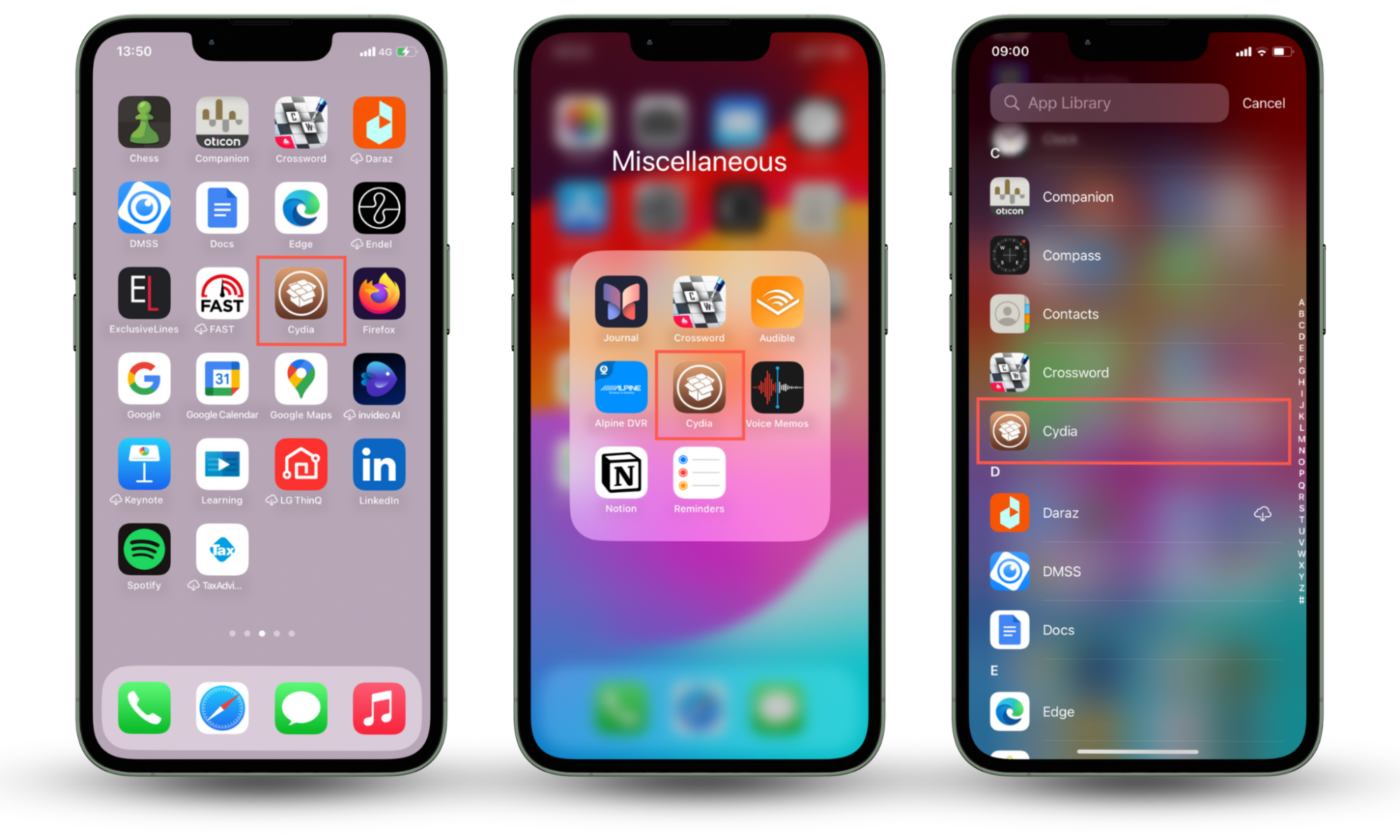
2. Use the Spotlight search bar to unhide Cydia
A Spotlight search is a quick way to find hidden apps on your iPhone, especially if you have too many Home Screen pages and folders to sift through.
Here’s how to unhide Cydia on iPhone using Spotlight search:
- Perform a swipe-down gesture on any Home Screen page to invoke the Spotlight search bar.
- Type Cydia into the search field.
- If Cydia is installed, it should appear at the top of the search results.
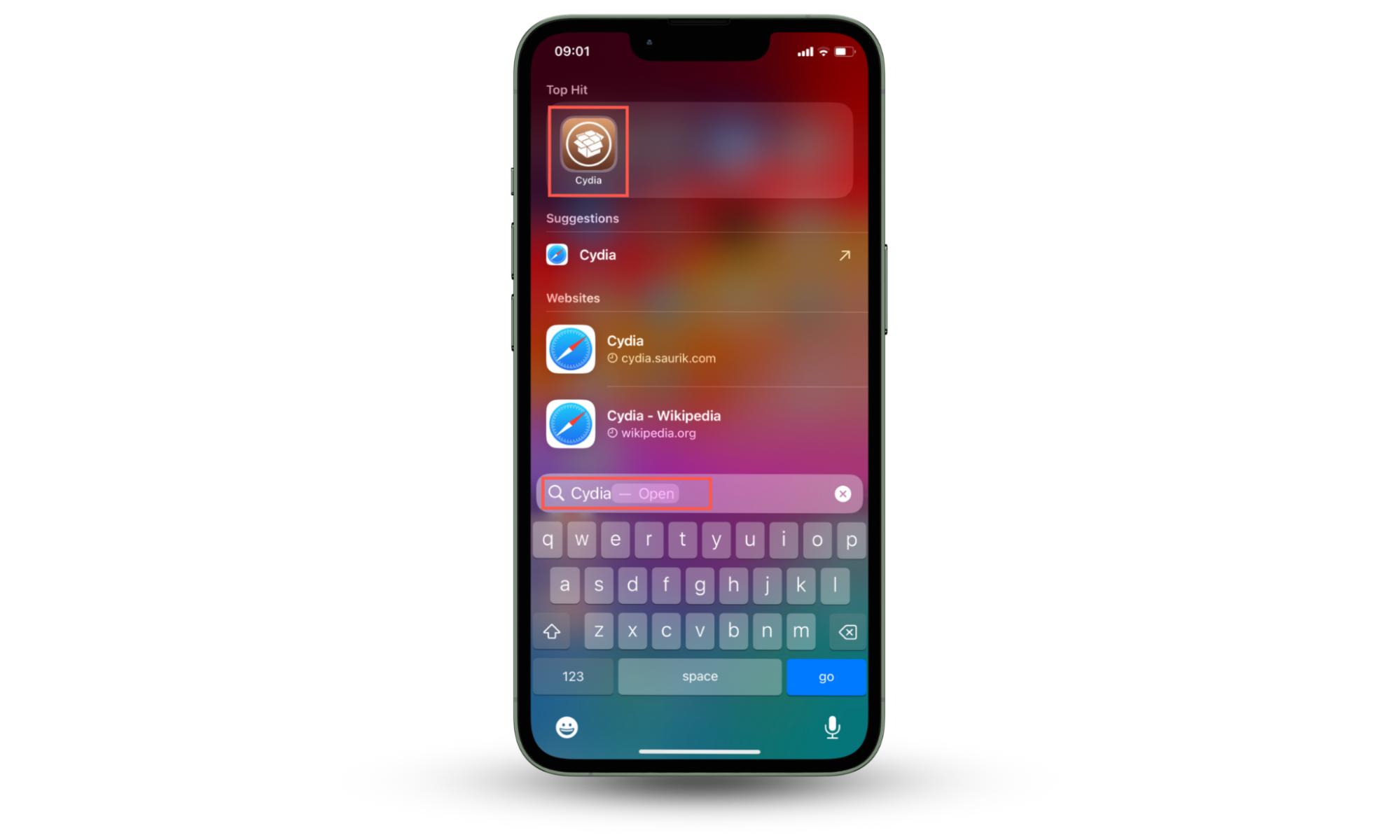
Cydia can be disabled from appearing in Spotlight. Don't assume your iPhone hasn't been jailbroken if the app fails to show up in the search results.
3. Detect Cydia on iPhone with Clario Anti Spy
If you still can’t detect Cydia on iPhone manually, Clario Anti Spy’s Jailbreak Detector can help you automatically scan for Cydia, other package managers, and jailbreak traces.
Here's how to scan your iPhone with Clario Anti Spy:
- Download Clario Anti Spy and get a subscription to create an account.
- Under Device system check, tap Scan.
- See the results and follow the on-screen instructions if Clario Anti Spy detects a jailbreak.
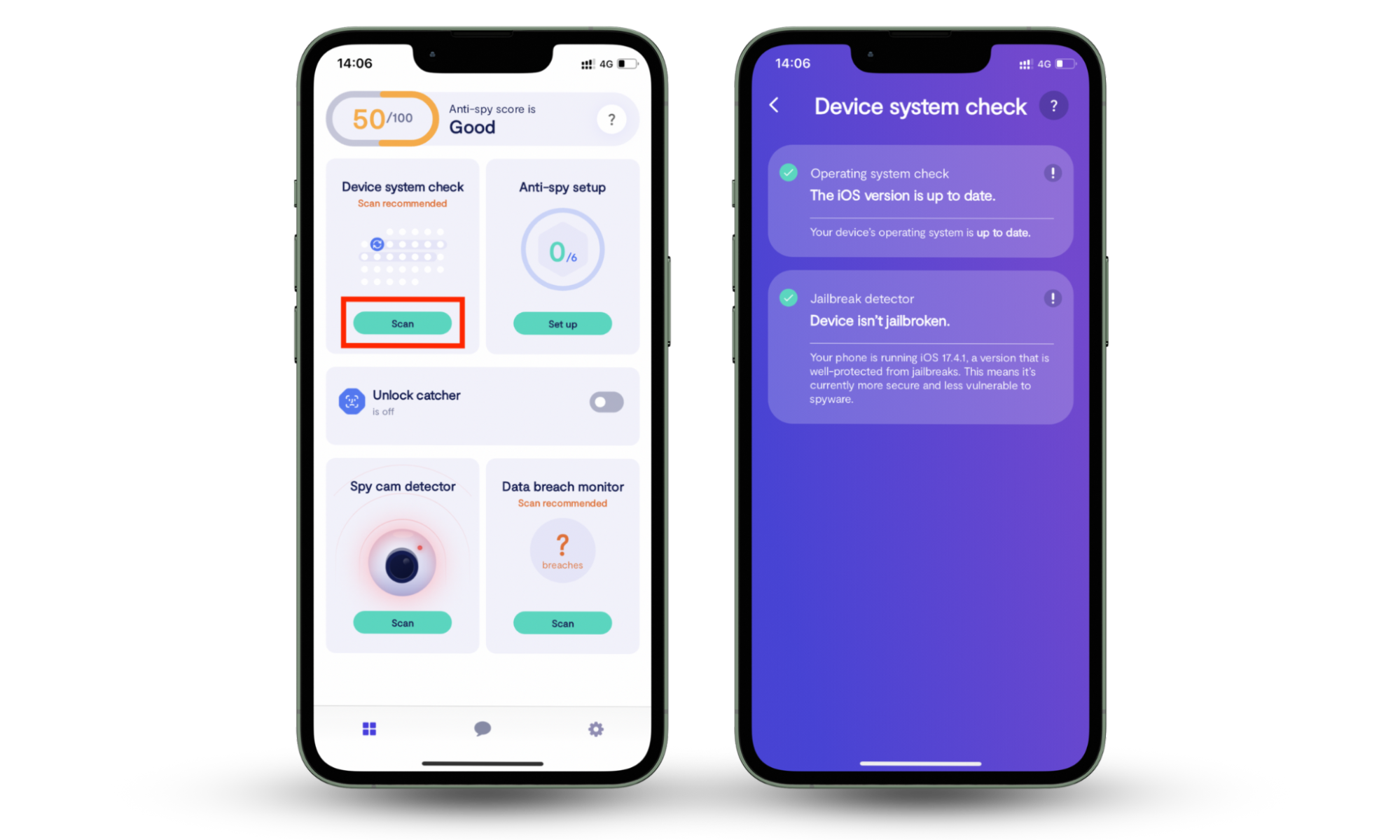
How to remove Cydia from iPhone
If you manage to find Cydia hidden on your iPhone, try opening it. If Cydia functions as a standalone app, you should assume that the device is jailbroken and hacked. Your best shot at removing any malicious tools used to spy on you is to get rid of the jailbreak.
Unfortunately, Cydia is only a storefront, so deleting it will not undo the jailbreak. Cydia also integrates with various jailbreak tweaks, and trashing it could destabilize the system. The only reliable way to uninstall Cydia and disable the jailbreak is to erase your iPhone and reinstall iOS (factory reset).
If your iPhone has a dummy jailbreak, tapping the Cydia icon will open a browser-based webpage rather than an app. Fake exploits tend to introduce malware, so it's wise to perform a factory-reset regardless as the procedure removes viruses from your iPhone.
Back up your iPhone
A factory reset removes all data from your iPhone, so it's essential to back up the device to iCloud or a computer before proceeding.
Here’s how to back up your iPhone to iCloud before you erase or remove a jailbreak:
- Open the Settings app for iOS and tap your Apple ID at the top.
- Go to iCloud → iCloud Backup.
- Tap Back Up Now to start the backup process.

Here's how to back up your iPhone to a Mac or PC:
- Connect your iPhone to your PC or Mac with a USB cable. If this is your first time doing that, unlock the phone and tap Trust.
- Open iTunes (on PCs or macOS Mojave and earlier) or Finder (on macOS Catalina and later).
- Select your iPhone on the top left of the iTunes window or the Finder sidebar.
- Select the option to Back up all of the data on your iPhone to this Mac/PC.
- Select Back Up Now and wait until your computer backs up your iPhone.
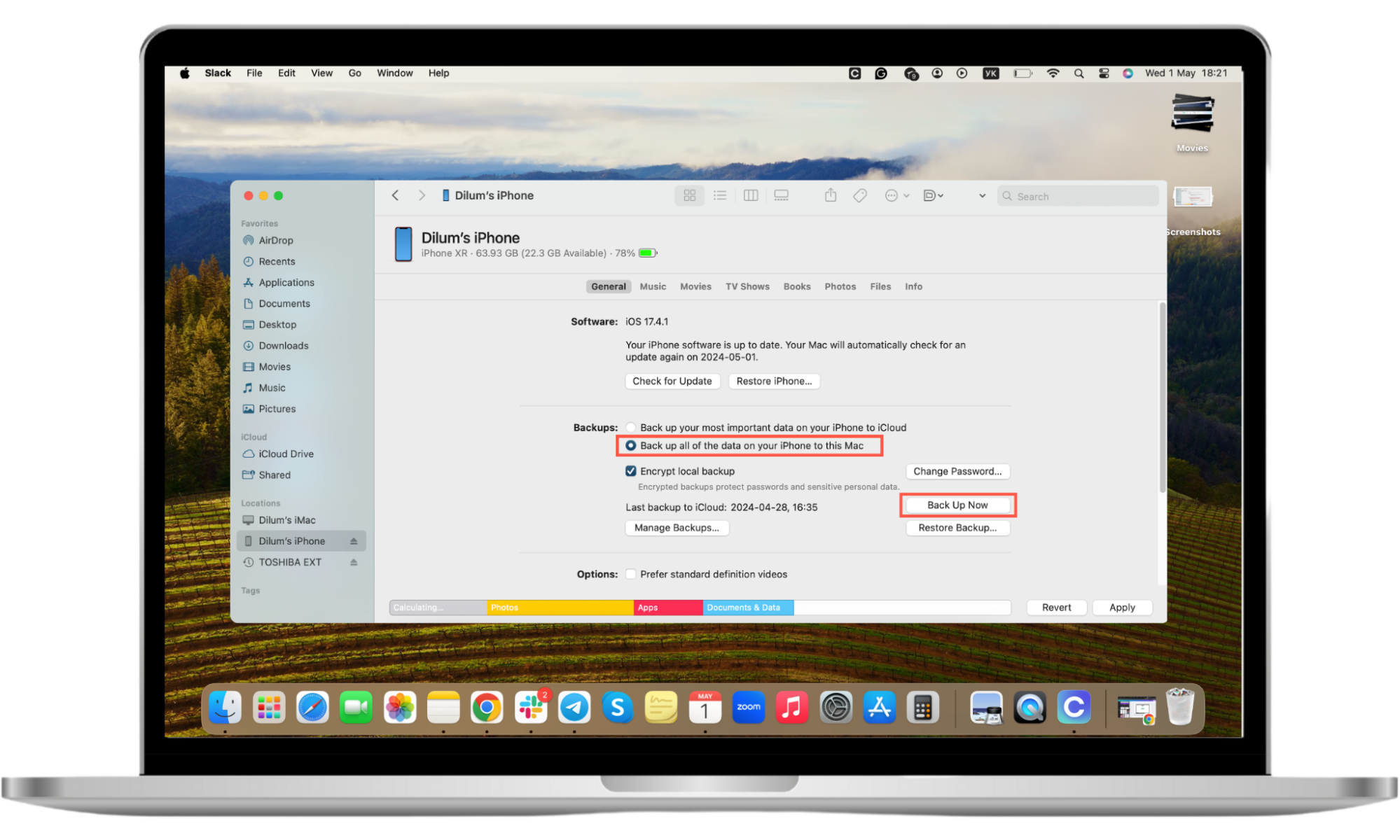
Erase and reinstall iOS
A factory reset removes the jailbreak and all your data, settings, and apps. You can do that directly through your iPhone or with a Mac or PC.
Here's how to factory reset your iPhone through the iOS Settings:
- Open the Settings app and tap General.
- Scroll down and tap Transfer or Reset iPhone. On iOS 14 and older, tap Reset.
- Tap Erase All Content and Settings, choose Continue, and follow all on-screen instructions.
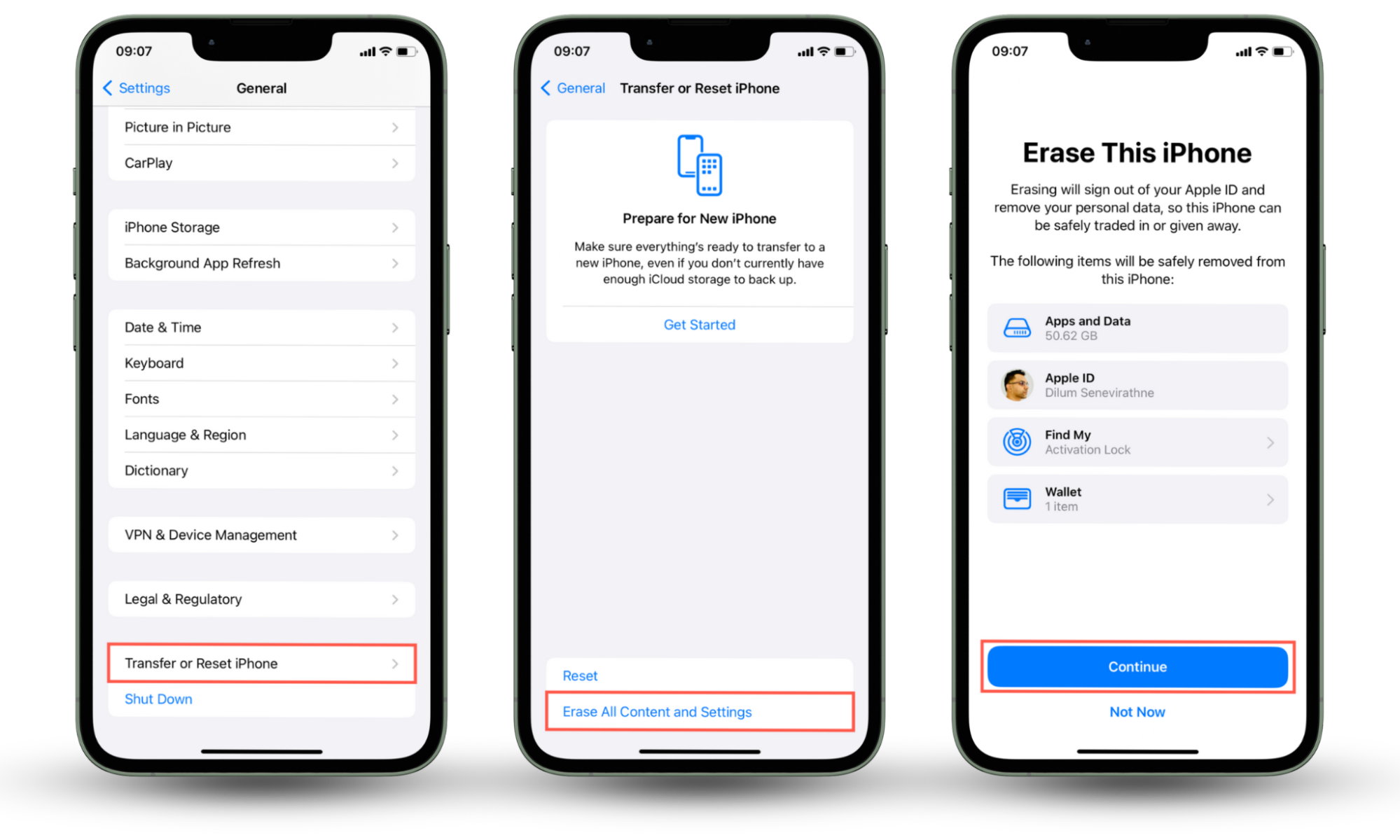
Here's how to factory reset your iPhone via a Mac or PC:
- Connect your iPhone to your computer via USB.
- Open Finder or iTunes and select your iPhone.
- Select Restore iPhone and follow all on-screen instructions.

Restore your iPhone data
After a factory reset, you can restore your iPhone data from a backup. When you reach the Apps and Data screen in the Setup Assistant, select Restore from iCloud Backup or Restore from Mac/PC.
In case you're wondering, restoring from a backup does have the potential to reintroduce miscellaneous data and settings from a jailbreak. These leftovers typically don't affect the device's state or cause problems.
If you want to ensure your iPhone is absolutely clean of all jailbreak traces, consider setting it up as a new device. If you do that, you'll lose your data except for any information that actively syncs to your Apple ID—e.g., photos and notes.
Conclusion
Taking the time to find hidden Cydia on iPhone is an effective way to check if your device has been jailbroken without your knowledge. Moreover, it pays to be on the lookout for other package managers and general symptoms of spyware. With Apple gradually allowing app installations from outside the App Store, running Clario Anti Spy on your iOS device can also keep it secure and free from unauthorized software.
FAQ about Cydia on iPhone
1. Is Cydia safe for iPhones?
Cydia isn’t dangerous by itself, but using it comes with security, privacy, and warranty risks. It's safest if you are the one jailbreaking your iPhone and fully understand the implications of your actions.
Jailbreaks expose security vulnerabilities, void warranties, and lead to unstable performance. Be sure to thoroughly research any apps you install and changes you make to the system software.
2. Do I have Cydia on my iPhone?
You can detect Cydia on an iPhone by:
- Looking for the Cydia app icon on the Home Screen, within folders, and in the App Library.
- Swiping down on the Home Screen and typing Cydia into the Spotlight search bar.
- Scanning your iPhone for jailbreaks with a security tool like Clario Anti Spy.
3. What is the Cydia icon on an iPhone?
The Cydia icon on an iPhone opens the Cydia Store, where users can download apps and tweaks exclusive to jailbroken devices. If Cydia launches in a web browser instead of functioning as an app, the device is likely on a fake jailbreak exploit.
